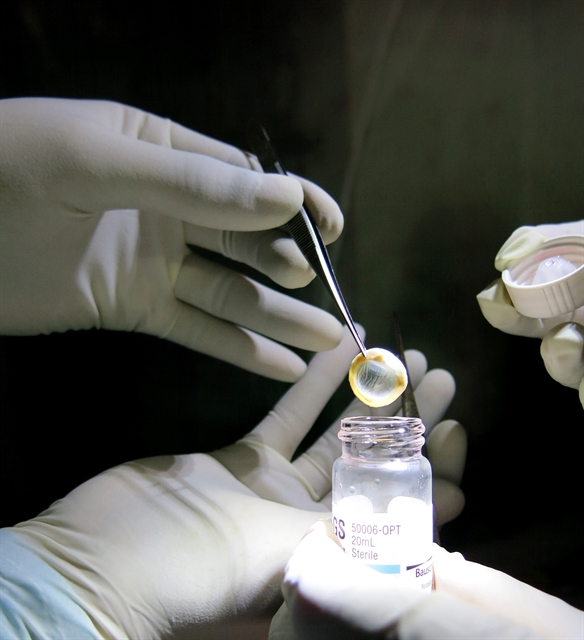 Society
Society

 |
| Doctors perform cornea transplant surgery in Huế Central Hospital. — VNA/VNS Photo |
HÀ NỘI — Việt Nam has witnessed a rising number of cornea donors since the first transplant of this kind in Việt Nam nearly two decades ago, but with a 300,000 strong waiting list, the country has much work to do to ensure donated corneas reach those who need them.
According to Dr Nguyễn Thị Kim Tiến, chairwoman of the Việt Nam Tissue and Organ Donation Advocacy Association and former health minister, Việt Nam’s technical skills in terms of organ transplant are now on par with the region and the world.
However, the waiting list for transplants continues to increase, while the number of registered donors remains modest.
The situation is particularly critical for cornea transplants, with some patients already waiting for five to six years without any donor being found.
Over the past 15 years, Việt Nam recorded about 45,000 people signed up as cornea donors. Of the 3,000 who have received cornea replacements since 2007, more than half were helped by domestic donors.
From May 2024 to date, the number of organ donations from brain-dead patients increased three-fold, with transplant surgeries rising by 10 per cent.
However, Việt Nam still has about 300,000 visually impaired people in need of cornea replacements.
According to medical professionals, cornea transplantation is currently the only and most effective method to help restore vision in patients with corneal damage, especially in cases where internal medicine treatments yield little result.
In addition to the limited donations available in Việt Nam, challenges also stem from the complex transfer and preservation procedures to receive cornea donations from abroad.
“Therefore, authorities and facilities receiving cornea for collection and transplant should work with relevant agencies to facilitate the transfer of cornea donations from abroad, and conduct the surgery for patients as soon as possible,” said Tiến.
Over the past eight months, the Hà Nội Eye Hospital 2 has received 57 cornea donations, of which two were from patients in Việt Nam, while the remainder came from American eye banks.
The hospital successfully carried out 42 cornea transplant operations and distributed the remaining donations to other medical facilities.
 |
| Doctors retrieve a cornea at the Việt Nam National Eye Hospital. — VNA/VNS Photo Minh Đức |
Dr Howard Cajucom-Uy Yu, a council member of the Association of Eye Banks of Asia, said that cornea donations have no negative aesthetic effect on the deceased, as this is only a thin, translucent layer on top of the eyeball, but multiple barriers exist in terms of encouraging donors.
These include local traditions, customs, religions, beliefs, the emotional state of the donor’s family, or misconceptions regarding the law related to organ donation and transplant.
Sharing the same perspective, Dr Nguyễn Hoàng Phúc, deputy director of the Việt Nam National Coordinating Centre for Human Organ Transplantation, said that these factors have limited the number of donated corneas not only in Việt Nam, but also around the world.
“Therefore, it is necessary to have better awareness campaigns, a realistic legal framework and to include organ and tissue donation as an evaluation criteria of the health care sector,” said Phúc. — VNS




